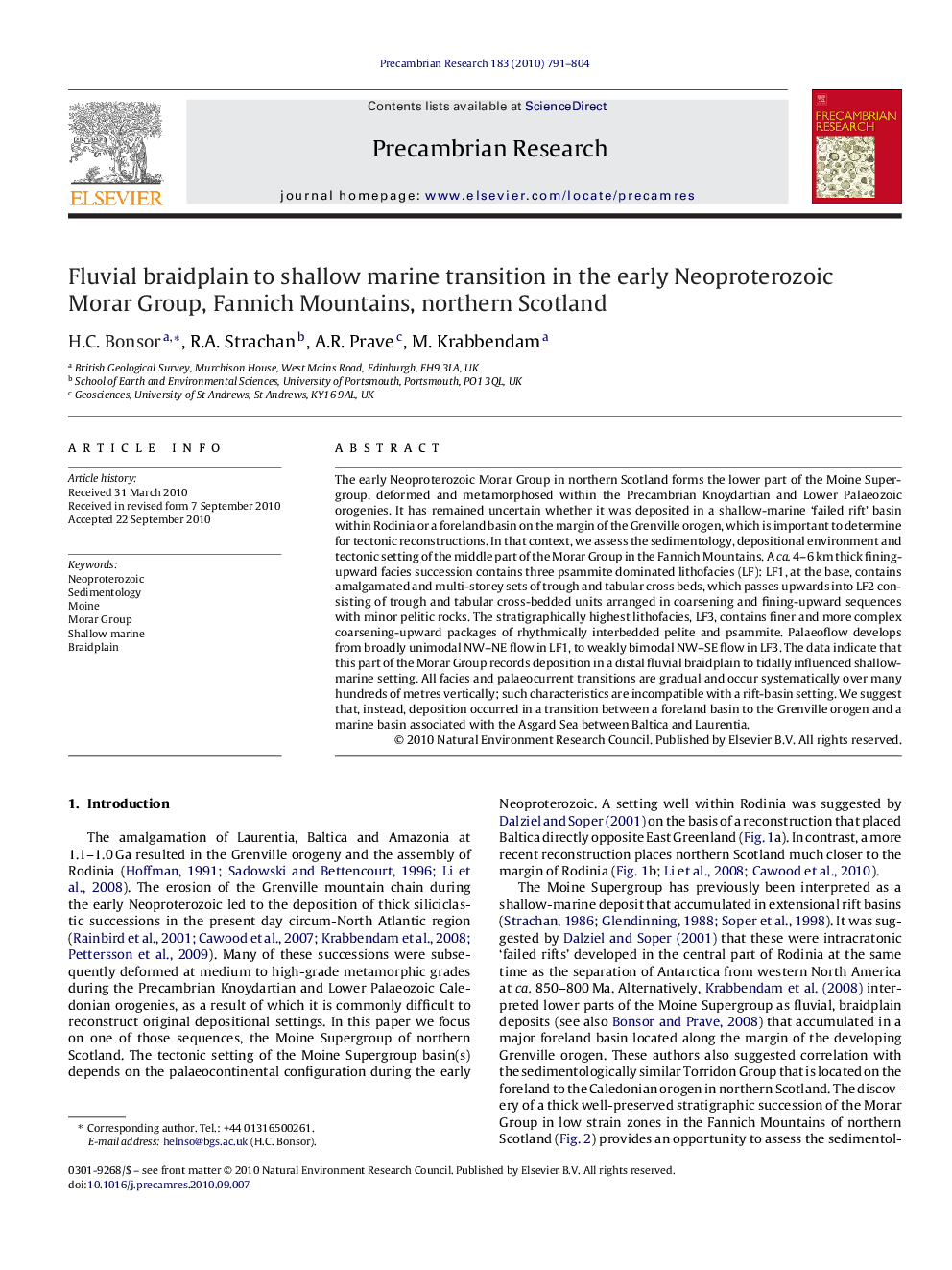| Article ID | Journal | Published Year | Pages | File Type |
|---|---|---|---|---|
| 4723816 | Precambrian Research | 2010 | 14 Pages |
The early Neoproterozoic Morar Group in northern Scotland forms the lower part of the Moine Supergroup, deformed and metamorphosed within the Precambrian Knoydartian and Lower Palaeozoic orogenies. It has remained uncertain whether it was deposited in a shallow-marine ‘failed rift’ basin within Rodinia or a foreland basin on the margin of the Grenville orogen, which is important to determine for tectonic reconstructions. In that context, we assess the sedimentology, depositional environment and tectonic setting of the middle part of the Morar Group in the Fannich Mountains. A ca. 4–6 km thick fining-upward facies succession contains three psammite dominated lithofacies (LF): LF1, at the base, contains amalgamated and multi-storey sets of trough and tabular cross beds, which passes upwards into LF2 consisting of trough and tabular cross-bedded units arranged in coarsening and fining-upward sequences with minor pelitic rocks. The stratigraphically highest lithofacies, LF3, contains finer and more complex coarsening-upward packages of rhythmically interbedded pelite and psammite. Palaeoflow develops from broadly unimodal NW–NE flow in LF1, to weakly bimodal NW–SE flow in LF3. The data indicate that this part of the Morar Group records deposition in a distal fluvial braidplain to tidally influenced shallow-marine setting. All facies and palaeocurrent transitions are gradual and occur systematically over many hundreds of metres vertically; such characteristics are incompatible with a rift-basin setting. We suggest that, instead, deposition occurred in a transition between a foreland basin to the Grenville orogen and a marine basin associated with the Asgard Sea between Baltica and Laurentia.
